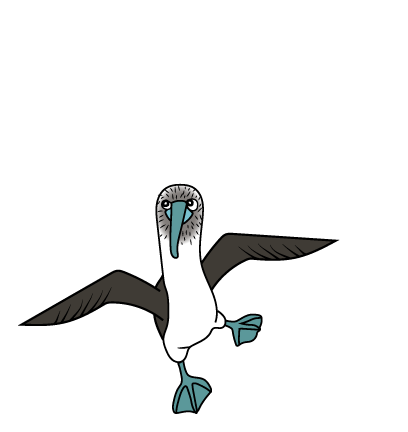welcome to the
GALAPAGOS ISLANDS
Keep Scrolling


The islands

The Galapagos Islands straddle the equator 600 miles off the coast of mainland Ecuador in the Pacific Ocean. The archipelago is comprised of 18 main islands, three smaller islands and over 100 rocky islets and outcroppings, encompassing 3,040 square miles of land mass spread out over 23,000 square miles of ocean. The largest island, Isabela, at over 1,700 square miles (larger than the state of Rhode Island), contains more than half the total landmass of the islands and reaches to over 5,600 feet above sea level at its highest point. In geological terms, the islands are relatively young. They began to form ten to fifteen million years ago when volcanic eruptions on the ocean floor started spewing lava, causing underwater mountains to eventually form. Over time, the bases of these mountains joined together and created the Galapagos Platform, a basaltic submarine plateau on which the island chain now sits. When the tips of the mountains finally reached the ocean's surface five million years ago, the islands were officially born. Today, the islands are one of the most volcanically active island groups in the world, with six active volcanoes and more than fifty eruptions in the last two centuries. Some of the original islands have long since receded beneath the ocean’s surface, while some of the younger islands, such as Fernandina and Isabela, are still in the process of being made. Because of their location on the Nazca tectonic plate, which is slowly moving eastward towards South America, the islands will eventually be subsumed beneath the continent and disappear entirely. Because of their volcanic origins, the islands have never been physically joined to the South American continent, which explains why native mammals are rare and why so many species found here exist nowhere else. The islands' extreme isolation made getting here very difficult indeed, and the species of plants and animals that managed to float, drift or fly here had to adapt quickly to survive in their harsh new environment.


Blue-Footed Booby

The blue-footed booby is perhaps the most famous of the Galapagos birds and is often the first type of booby seen by visitors. Large, colonies on Seymour and Hood are present throughout the year. This large, whitish-brown seabird grows from 2.5 to 3 feet in length and has a wingspan of about 5 feet. The blue-footed booby really does have bright blue feet, which it picks up in a slow, most dignified fashion when performing a courtship display. Bowing, wing spreading and sky pointing, with its neck, head and bill stretched straight upward, are also features of courtship. Watching this clownish behavior is one of the highlights of any Galapagos trip! At first glance, the males and females are almost identical, but they can be told apart; the larger females have a slightly bigger pupil and they honk, whereas the males whistle. Courtship, mating and nesting occur year-round, although nesting is a euphemism for a scrape on the ground (literally) surrounded by a ring of guano. The young, of which there may be one, two or three, are covered with fluffy white down which can make them look larger than their parents. In a good year, all three of the young may survive; otherwise, the strongest one or two will out compete the weakest, which subsequently dies of starvation. The female blue-footed booby lays two to three pale blue or green eggs. The nest is on the ground. The eggs take about 45 days to hatch. Both parents incubate the eggs using their feet. As the eggs start to hatch, the parents will rest the eggs on top of their feet. The male brings food back to the nest for the female and the chicks. The chicks take regurgitated fish from their parents' bills. The chicks stay with their parents for about two months. The blue-footed booby nests in colonies. Blue-footed boobies have a very elaborate mating ritual. The male raises one blue foot in the air and then the other as he struts in front of the female. Both the male and the female stretch their necks and point their bills to the sky. The male spreads his wings and whistles. The female may tuck her head under her wing.

galapagos Fur Seal
Galapagos fur seals aren't actually true fur seals, but a species of fur sea lion. They are similar in appearance to Galapagos sea lions and are often mistaken for them. It is actually pretty easy to distinguish between the two if you know what to look for; fur seals are typically quite a bit smaller and have broader, shorter, more bear-like heads. They also have larger front flippers (better for climbing up rocks), more protuberant eyes and ears, and are much furrier than Galapagos sea lions. Fur seals prefer cooler, shadier, rockier areas with easy access to deep water, instead of the direct sunlight, open stretches of beach and shallow water that sea lions prefer. Because of this, fur seals are seen less frequently than sea lions, leading many visitors to mistakenly think that sea lions are much more abundant than fur seals. In truth, their numbers are about the same. In spite of their differences, fur seals have a lot in common with their sea lion cousins when it comes to social and breeding behavior. The males of both species protect harems of females from rival males. The breeding season lasts from August to November. Females may give birth each year, but mortality among pups is high and it's unusual for a mother to successfully raise more than one pup every two years. Fur seals hunt for fish and squid at night, often diving to depths of more than 300 feet, taking care to avoid the sharks and killer whales that prey upon them.
